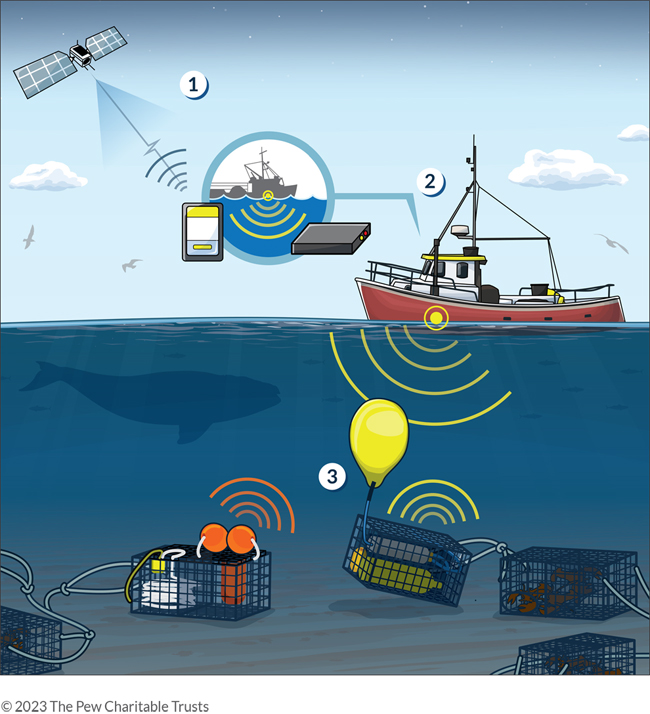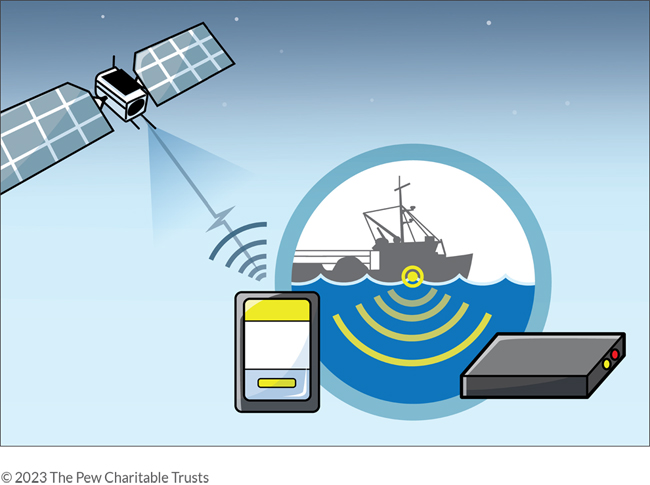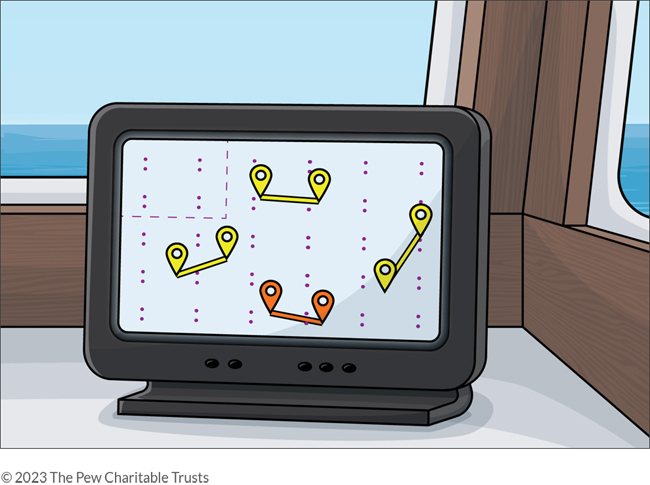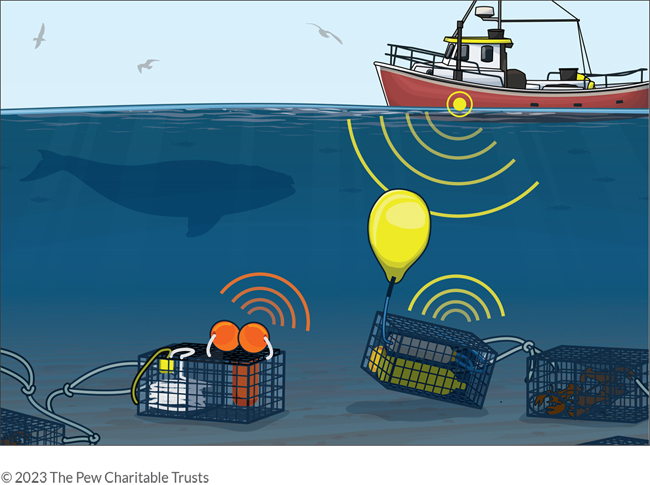On-Demand Fishing Systems Need to Use a Common Language
Innovative gear is safer for sea life, but should use acoustic technology and standardized communication
Marine animals, including critically endangered North Atlantic right whales, can die after becoming entangled in fishing gear, particularly the ropes that connect pots and traps on the seafloor to buoys on the surface. To help solve this problem, gear developers have created “on-demand” or “ropeless” fishing gear that require fewer ropes, reducing the risk to marine creatures. This type of gear uses global positioning systems (GPS) or acoustic marking technology instead of buoys at the water’s surface to mark the locations of traps.
Vessels use this location information to set, find, and retrieve their traps. But currently, vessels using on-demand fishing systems can detect only some of the nearby gear because each manufacturer uses its own proprietary communication technology. Further, on-demand systems that rely on GPS rather than the more accurate acoustic marking technology show only the location on the surface where the gear was initially dropped, not where it sits on the seafloor. This imprecise data compromises vessels’ ability to avoid conflicts with other fishing gear in busy areas and complicates fishery enforcement efforts.
As NOAA Fisheries drafts regulations to enable broad use of this new way of fishing, it should encourage wider adoption of on-demand gear with acoustic rather than GPS technology and require all manufacturers to use a common language for acoustic marking systems. A standard language would allow every vessel to see all the nearby acoustic-based ropeless systems on the seafloor—not just their own—and would improve the accuracy of gear location information overall.
How Would Well-Designed On-Demand Fishing Work?
Acoustic marking technology and a common language would provide accurate location information and reduce gear conflict
1. A common language and cloud-based location data. Every time a fishing vessel using on-demand gear passes over traps with an acoustic marking system, the common language allows the vessel to receive the gear’s location on an app or local data storage drive. The app or local storage then transmits that information over a Wi-Fi, cellular, or satellite connection to a unified cloud database.
2. Chart plotters show gear locations. Each fishing vessel’s chart plotter—a digital display installed in the wheelhouse—receives data from the cloud that provides locations of all nearby gear in near real time while protecting other vessels’ private business information. Enforcement agencies can see all gear.
3. Setting and retrieving gear. Using the location data on their chart plotters, fishing vessels can detect and avoid nearby systems on the seafloor when setting traps and can send a command to bring their traps to the surface. And because on-demand gear is safer for wildlife, fishermen using these systems would be permitted to operate in areas that are closed to vessels with traditional fishing gear when right whales are present.
















